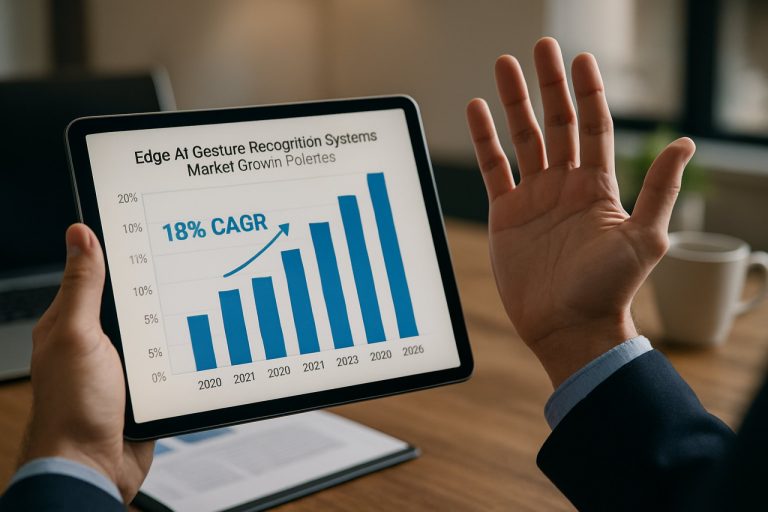
Actuarial Automation in Insurtech 2025: Transforming Risk Assessment and Underwriting with Next-Gen AI. This report delivers in-depth analysis of market trends, technology adoption, and growth opportunities through 2030.
- Executive Summary and Market Overview
- Key Technology Trends in Actuarial Automation
- Competitive Landscape: Leading Players and Emerging Innovators
- Market Size and Growth Forecasts (2025–2030)
- Regional Analysis: Adoption and Investment Hotspots
- Challenges and Opportunities in Actuarial Automation
- Future Outlook: Strategic Recommendations and Market Scenarios
- Sources & References
Executive Summary and Market Overview
The actuarial automation segment within the insurtech industry is rapidly transforming traditional insurance operations by leveraging advanced technologies such as artificial intelligence (AI), machine learning (ML), and robotic process automation (RPA). Actuarial automation refers to the use of these digital tools to streamline, enhance, and sometimes fully automate actuarial tasks, including risk modeling, pricing, reserving, and regulatory reporting. This shift is driven by the need for greater efficiency, accuracy, and agility in a highly competitive and regulated market.
In 2025, the global insurtech market is projected to surpass $15 billion, with actuarial automation representing a significant and growing subsegment. The adoption of automation solutions is particularly pronounced among large insurers and reinsurers seeking to reduce operational costs and accelerate product development cycles. According to McKinsey & Company, automation could reduce actuarial processing times by up to 80%, while also minimizing human error and improving compliance with evolving regulatory standards.
- Key Drivers: The main factors fueling actuarial automation include the exponential growth of data, increasing regulatory complexity, and the demand for real-time analytics. Insurers are under pressure to deliver personalized products and pricing, which requires sophisticated, automated actuarial models capable of processing vast datasets efficiently.
- Technological Advancements: The integration of cloud computing, AI, and advanced analytics platforms is enabling insurers to automate complex actuarial workflows. Leading technology providers such as Guidewire and SAS are offering end-to-end solutions that support automated data ingestion, model development, and reporting.
- Market Adoption: North America and Europe are at the forefront of actuarial automation adoption, driven by mature insurance markets and robust regulatory frameworks. However, Asia-Pacific is emerging as a high-growth region, with insurtech startups and incumbents alike investing in automation to capture new market opportunities, as highlighted by Deloitte.
Looking ahead, actuarial automation is expected to become a core differentiator for insurers, enabling faster innovation, improved risk management, and enhanced customer experiences. As the insurtech ecosystem matures, partnerships between insurers, technology vendors, and data providers will further accelerate the adoption and sophistication of automated actuarial solutions.
Key Technology Trends in Actuarial Automation
Actuarial automation in insurtech is rapidly transforming the insurance industry by leveraging advanced technologies to streamline actuarial processes, enhance risk assessment, and accelerate product development. As of 2025, several key technology trends are shaping this evolution, driven by the need for greater efficiency, accuracy, and agility in a highly competitive market.
- Artificial Intelligence and Machine Learning: AI and ML are at the forefront of actuarial automation, enabling insurers to analyze vast datasets, identify complex patterns, and generate predictive models with unprecedented speed and precision. These technologies are being used to automate pricing, underwriting, and claims management, reducing manual intervention and minimizing human error. Leading insurtech firms such as Lemonade and Root Insurance have integrated AI-driven actuarial models to deliver real-time quotes and personalized policies.
- Robotic Process Automation (RPA): RPA tools are automating repetitive, rule-based actuarial tasks such as data extraction, validation, and reporting. This not only accelerates actuarial workflows but also frees up actuaries to focus on higher-value analytical work. According to Deloitte, RPA adoption in insurance is expected to grow significantly, with actuarial departments among the primary beneficiaries.
- Cloud-Based Actuarial Platforms: Cloud computing is enabling insurers to deploy scalable actuarial solutions, collaborate across geographies, and access advanced analytics tools without heavy upfront investments. Platforms like Moody’s Analytics and Milliman offer cloud-native actuarial software that supports automation, scenario modeling, and regulatory compliance.
- Data Integration and API Ecosystems: Seamless integration of internal and external data sources via APIs is enhancing the quality and breadth of actuarial analysis. Insurtechs are leveraging open data ecosystems to incorporate real-time information from IoT devices, telematics, and third-party databases, improving risk modeling and customer segmentation.
- Explainable AI and Regulatory Compliance: As automation increases, there is a growing emphasis on transparency and explainability in actuarial models. Insurtechs are investing in explainable AI frameworks to ensure compliance with evolving regulatory standards and to build trust with stakeholders, as highlighted by EY.
These technology trends are not only optimizing actuarial operations but also enabling insurers to innovate faster, respond to market changes, and deliver more personalized products in 2025 and beyond.
Competitive Landscape: Leading Players and Emerging Innovators
The competitive landscape for actuarial automation in insurtech is rapidly evolving, driven by both established technology providers and a wave of innovative startups. As insurers seek to modernize legacy systems and accelerate product development, the demand for advanced actuarial automation solutions has intensified. This has led to a dynamic market where traditional actuarial software vendors are being challenged by agile insurtech firms leveraging artificial intelligence (AI), machine learning (ML), and cloud-native architectures.
Leading players in this space include Moody’s Analytics, WTW (Willis Towers Watson), and Milliman. These companies have long provided actuarial modeling platforms, such as Moody’s AXIS and WTW’s RiskAgility, which are now being enhanced with automation features like real-time data integration, scenario testing, and workflow orchestration. Their established client bases and deep actuarial expertise give them a competitive edge, particularly among large insurers seeking robust, enterprise-grade solutions.
However, the market is witnessing significant disruption from emerging innovators. Startups such as Akira AI and Avidon Health are introducing cloud-based actuarial automation platforms that emphasize speed, flexibility, and ease of integration with digital insurance ecosystems. These solutions often feature low-code or no-code interfaces, enabling actuaries to build and deploy models without extensive IT support. Additionally, companies like Clay are leveraging AI to automate complex actuarial tasks such as claims reserving, pricing optimization, and regulatory reporting.
Strategic partnerships and acquisitions are shaping the competitive dynamics. For example, Guidewire has expanded its actuarial automation capabilities through partnerships with analytics firms, while Sapiens has integrated automation modules into its core insurance platforms. These moves reflect a broader trend of convergence between core insurance administration and advanced analytics.
Looking ahead to 2025, the competitive landscape is expected to remain fluid. Incumbents are investing heavily in R&D to retain market share, while insurtech startups continue to attract venture capital and pilot projects with forward-thinking insurers. The winners in this space will likely be those that can deliver scalable, regulatory-compliant automation while enabling actuaries to focus on higher-value strategic analysis.
Market Size and Growth Forecasts (2025–2030)
The actuarial automation segment within the insurtech industry is poised for robust expansion in 2025, driven by increasing adoption of artificial intelligence (AI), machine learning, and advanced analytics to streamline actuarial processes. According to projections by McKinsey & Company, automation technologies are expected to transform core insurance functions, with actuarial modeling and risk assessment among the primary beneficiaries. The global insurtech market, valued at approximately $10.4 billion in 2022, is forecasted to reach $29.75 billion by 2030, registering a CAGR of 14.1% from 2023 to 2030, as reported by Grand View Research. Within this, actuarial automation is anticipated to capture a growing share, as insurers seek to reduce manual workloads, improve accuracy, and accelerate product development cycles.
In 2025, the market for actuarial automation solutions is expected to surpass $1.2 billion globally, reflecting a year-on-year growth rate of over 16%, according to estimates from Gartner. This growth is fueled by the increasing complexity of insurance products, regulatory demands for transparency, and the need for real-time risk assessment. North America remains the largest market, accounting for over 40% of global spending, followed by Europe and Asia-Pacific, where digital transformation initiatives are accelerating adoption.
Key drivers in 2025 include the integration of cloud-based actuarial platforms, the proliferation of data sources (such as IoT and telematics), and the demand for predictive analytics in pricing and reserving. Insurers are investing in automation to enhance operational efficiency, reduce errors, and enable actuaries to focus on higher-value strategic tasks. Leading vendors, including Moody’s Analytics and WTW, are expanding their offerings with AI-powered tools that automate data ingestion, model validation, and scenario analysis.
Looking ahead to 2030, the actuarial automation market is projected to maintain double-digit growth, with adoption rates highest among life and health insurers, where product complexity and regulatory scrutiny are most pronounced. As automation matures, the focus will shift from process efficiency to strategic enablement, supporting innovation in product design and risk management across the insurance value chain.
Regional Analysis: Adoption and Investment Hotspots
The adoption and investment in actuarial automation within insurtech are highly region-specific, reflecting differences in regulatory environments, technological maturity, and insurance market dynamics. In 2025, North America, particularly the United States, remains the leading hotspot for actuarial automation, driven by a robust insurtech ecosystem, significant venture capital inflows, and a mature insurance sector. According to CB Insights, the U.S. accounted for over 50% of global insurtech funding in 2024, with a substantial portion directed toward automation and advanced analytics platforms. Major carriers and startups alike are leveraging AI-driven actuarial tools to streamline underwriting, pricing, and claims processes.
Europe is emerging as a strong secondary market, with the UK, Germany, and France at the forefront. The region benefits from supportive regulatory frameworks such as the EU’s Digital Operational Resilience Act (DORA), which encourages digital transformation in financial services. European insurers are increasingly investing in automation to comply with Solvency II requirements and to enhance operational efficiency. According to EY, over 60% of European insurers plan to increase spending on automation technologies in 2025, with actuarial functions being a primary focus.
Asia-Pacific is witnessing rapid growth, particularly in markets like China, Japan, and Singapore. The region’s insurtech sector is characterized by high digital adoption rates and government-led innovation initiatives. For instance, Singapore’s regulatory sandbox, managed by the Monetary Authority of Singapore, has accelerated the deployment of AI and automation in insurance. Chinese insurers, supported by the country’s strong AI ecosystem, are integrating actuarial automation to address the demands of a vast and digitally savvy customer base. McKinsey & Company projects that Asia-Pacific will see the fastest CAGR in insurtech investment through 2025, with actuarial automation as a key driver.
- North America: Largest market, innovation hub, high investment volumes.
- Europe: Regulatory-driven adoption, focus on compliance and efficiency.
- Asia-Pacific: Fastest growth, government support, digital-first strategies.
Other regions, such as Latin America and the Middle East, are in earlier stages but show increasing interest, particularly as global insurtech players expand and local insurers seek to modernize legacy systems. Overall, 2025 will see regional leaders continue to shape the trajectory of actuarial automation, with investment and adoption patterns closely tied to local market conditions and regulatory landscapes.
Challenges and Opportunities in Actuarial Automation
The integration of actuarial automation within insurtech is rapidly transforming the insurance industry, presenting both significant challenges and promising opportunities as we move into 2025. Automation leverages advanced analytics, artificial intelligence (AI), and machine learning to streamline actuarial processes such as pricing, reserving, and risk assessment. This shift is driven by the need for greater efficiency, accuracy, and agility in a highly competitive market.
One of the primary challenges is the complexity of legacy systems. Many insurers still rely on outdated infrastructure, making it difficult to implement modern automation tools without significant investment in system upgrades or replacements. This integration challenge is compounded by data silos and inconsistent data quality, which can undermine the effectiveness of automated actuarial models. According to Deloitte, insurers cite data integration and legacy modernization as top barriers to digital transformation.
Another challenge is the shortage of actuarial professionals with advanced data science and automation skills. The evolving role of actuaries now demands proficiency in programming, AI, and big data analytics, creating a talent gap that insurers must address through upskilling and recruitment. Additionally, regulatory compliance remains a concern, as automated models must be transparent and explainable to satisfy increasingly stringent oversight from regulators such as the National Association of Insurance Commissioners (NAIC).
Despite these hurdles, actuarial automation offers substantial opportunities. Automation can dramatically reduce the time required for routine actuarial tasks, freeing professionals to focus on strategic analysis and innovation. Real-time data processing enables more dynamic pricing and risk assessment, allowing insurers to respond swiftly to market changes and emerging risks. For example, Lemonade and other insurtech firms are leveraging automation to deliver instant quotes and claims processing, setting new standards for customer experience and operational efficiency.
Furthermore, automation enhances predictive accuracy by incorporating vast and diverse data sources, from telematics to social media, into actuarial models. This leads to more personalized products and improved risk selection. As noted by McKinsey & Company, insurers that successfully harness automation and AI can achieve significant cost savings and unlock new revenue streams through innovative offerings.
In summary, while actuarial automation in insurtech faces obstacles related to legacy systems, talent, and regulation, the opportunities for efficiency, accuracy, and customer-centric innovation are substantial as the industry advances into 2025.
Future Outlook: Strategic Recommendations and Market Scenarios
The future outlook for actuarial automation in insurtech is shaped by accelerating digital transformation, evolving regulatory landscapes, and the growing demand for personalized insurance products. As we approach 2025, insurers are expected to intensify investments in advanced analytics, artificial intelligence (AI), and machine learning (ML) to automate actuarial processes, driving both operational efficiency and competitive differentiation.
Strategically, insurers should prioritize the integration of cloud-based actuarial platforms that enable real-time data processing and scenario modeling. This shift not only reduces manual workloads but also enhances the accuracy and speed of risk assessment and pricing. According to Deloitte, insurers leveraging automation and AI in actuarial functions can expect up to a 30% reduction in operational costs and a significant improvement in time-to-market for new products.
Another key recommendation is the adoption of explainable AI (XAI) frameworks. As regulatory scrutiny intensifies, particularly around algorithmic transparency and fairness, insurers must ensure that automated actuarial models are interpretable and compliant with evolving standards. The EY 2024 insurance outlook highlights the importance of robust governance and audit trails in automated decision-making processes, especially as regulators in the US and EU introduce stricter guidelines for AI in insurance.
Scenario planning should also account for the increasing availability of alternative data sources, such as IoT devices and telematics, which can be seamlessly integrated into automated actuarial models. This enables more granular risk segmentation and supports the development of usage-based and on-demand insurance products. McKinsey & Company projects that by 2025, over 60% of insurers will use non-traditional data in their actuarial workflows, further enhancing predictive accuracy.
- Invest in scalable, cloud-native actuarial automation platforms.
- Implement explainable AI and maintain rigorous model governance.
- Leverage alternative data for innovative product development.
- Foster cross-functional teams to bridge actuarial expertise and data science.
In summary, the 2025 market scenario for actuarial automation in insurtech will be defined by technological sophistication, regulatory alignment, and data-driven innovation. Insurers that proactively adapt to these trends will be best positioned to capture emerging opportunities and mitigate future risks.
Sources & References
- McKinsey & Company
- Guidewire
- SAS
- Deloitte
- Lemonade
- Root Insurance
- Milliman
- EY
- WTW (Willis Towers Watson)
- Akira AI
- Avidon Health
- Sapiens
- Grand View Research
- Monetary Authority of Singapore
- National Association of Insurance Commissioners (NAIC)



